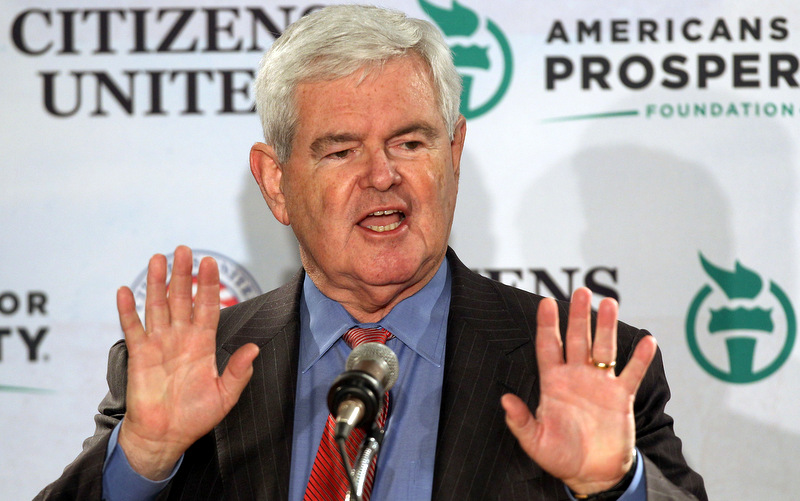
MINNEAPOLIS — Even by the most modest estimates, the record for outside spending in midterm elections could be broken this year. With Republicans hoping to expand their majority in the House and seize control of the Senate from the Democrats, and with Democrats hoping to minimize their losses prior to the likely Democratic swing in 2016, spending has been at a fever pitch.
According to the Center for Responsive Politics, as of May 28, $893,960,821 — $95,703,172 of which came from super PACs — had been raised for Senate and House races for the 2013-2014 cycle. With the primaries still underway, this represents substantial investment early in the election cycle.
By comparison, the 2009-2010 cycle saw $1,831,631,063 raised for all congressional races, and $304,754,935 of this total came from outside spending.
The heavy use of super PAC funding has manifested itself in unique ways so far in this election cycle. In Alaska, for example, a super PAC supporting Democratic Sen. Mark Begich’s re-election has announced a record media spend that would secure more than $4 million of television commercial time months before the ads are to air. The super PAC, Put Alaska First, is seeking to secure commercial slots during the final eight weeks before Election Day.
“Alaska has never had super PACs engaged at this level in the races but it’s the new normal for American congressional politics,” said Jim Lottsfeldt, head of Put Alaska First. Republicans have targeted Begich’s seat as a potential pick-up in their bid to take the Senate. The media buy is a record for Alaska, which — with 731,449 residents — is a slightly bigger media market than Baltimore.
In another example, billionaire environmental activist Tom Steyer’s super PAC, NextGen Climate Action, has announced plans to put $100 million into seven congressional and gubernatorial races in which the Republican challenger denies climate change or has received donations from the fossil fuel industries.
“The debate on climate change is settled,” Steyer told Reuters. “It is here, it is human-caused, and it is already having a devastating impact on our communities, but we need to accelerate the level of political support to address this critical issue before it’s too late.”
The dominance of super PACS in this election cycle threatens to stifle the voices of other avenues of campaign financing, including traditional PACs. With PACs limited to a per candidate donation of $5,000 per election, traditional and leadership PACs are struggling to keep up with super PACs like Americans for Prosperity, which currently has a war chest of over $40 million. This has created the impression that the majority of most of the nation’s campaign financing comes from just a few wealthy donors — meaning that, allegedly, most of America’s industries and voters do not have significant influence on those being elected to represent them.
“Leadership PACs are almost a thing of the past when you’ve got soft money out there able to write these kinds of checks,” said Terry Sullivan, the director of Republican Florida Sen. Marco Rubio’s leadership PAC, Renew America. “$10,000 is great for a candidate, and they’re appreciative. But that and another $10 million is what they need to run a campaign. We wanted to be able to do more.… Under the current environment, that doesn’t make the kind of impact Marco wanted to make.”
PACs are finding innovative ways to “stay in the game.” For example, Rubio’s PAC, in 2013, not only sent the maximum $10,000 to Republican Arkansas Rep. Tom Cotton’s Senate campaign, but also sent another $18,000 via direct solicitation from Renew America donors and purchased a $200,000 media buy for Cotton. Rubio’s PAC has also purchased media buys for other candidates across the nation in an attempt to win influence for Rubio. Industrial PACs — such as the American Society of Anesthesiologists and the American Hospital Association PAC — are relying on heavy television and mail campaign tactics to stay relevant in the post-Citizens United v. the Federal Election Commission and McCutcheon v. the Federal Election Commission era.
“There’s more money pumped in from outside than ever,” said one PAC director. “So if you want to have an effect and be helpful to a particular member, you can be more helpful by putting additional resources into the race. It’s not that $5,000 in the primary and $5,000 in the general aren’t still important … but I think a lot of people are thinking more about trying to make a difference in races that are in play.”
However, with the campaign finance system overwhelmed by super PACs and undisclosed donor “dark money” like donations from Internal Revenue Code Section 501(c)4 and 501(c)5 groups, the role of countering outside spending — which is traditionally reserved to the PACs and political parties — is becoming a harder task to fill. This increases the likelihood that political influence will continue to be held by the ultra-rich, fueling suspicions that the United States is becoming a plutocracy.

